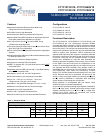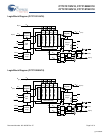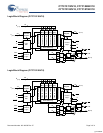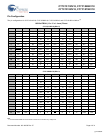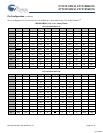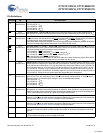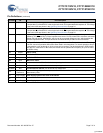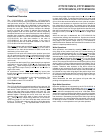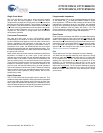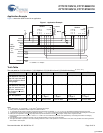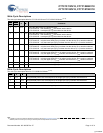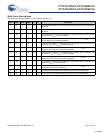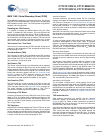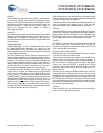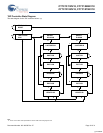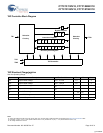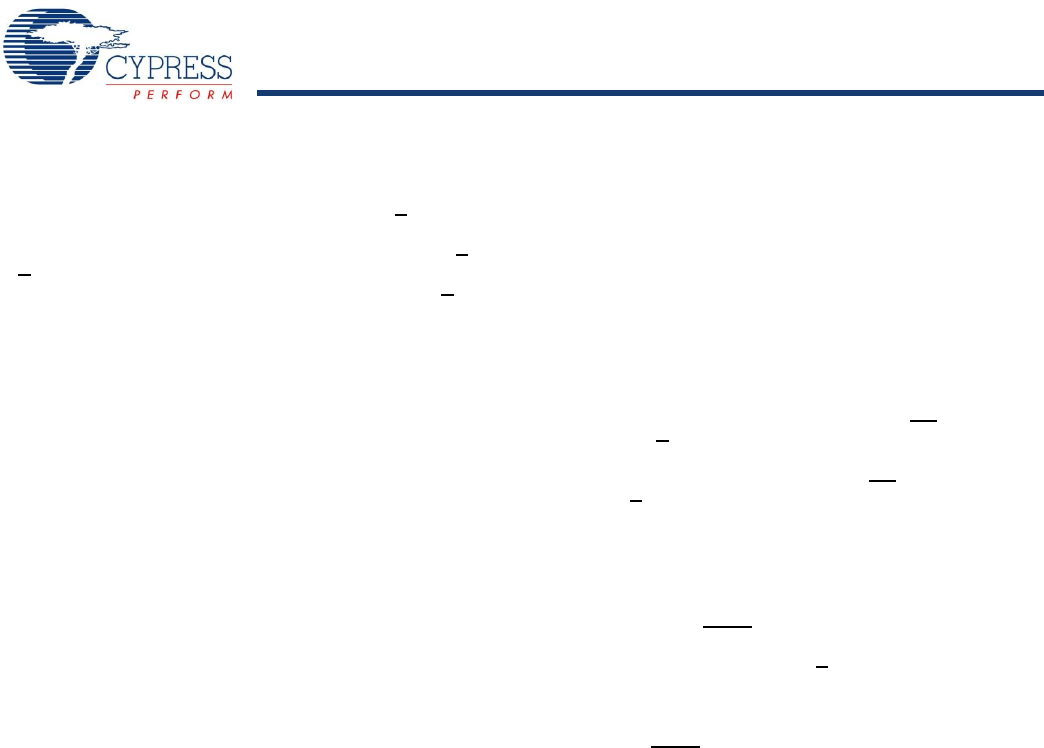
CY7C1511KV18, CY7C1526KV18
CY7C1513KV18, CY7C1515KV18
Document Number: 001-00435 Rev. *E Page 9 of 31
Single Clock Mode
The CY7C1511KV18 is used with a single clock that controls
both the input and output registers. In this mode the device
recognizes only a single pair of input clocks (K and K) that control
both the input and output registers. This operation is identical to
the operation if the device had zero skew between the K/K
and
C/C
clocks. All timing parameters remain the same in this mode.
To use this mode of operation, the user must tie C and C
HIGH
at power on. This function is a strap option and not alterable
during device operation.
Concurrent Transactions
The read and write ports on the CY7C1513KV18 operate
independently of one another. As each port latches the address
inputs on different clock edges, the user can read or write to any
location, regardless of the transaction on the other port. If the
ports access the same location when a read follows a write in
successive clock cycles, the SRAM delivers the most recent
information associated with the specified address location. This
includes forwarding data from a write cycle that was initiated on
the previous K clock rise.
Read access and write access must be scheduled such that one
transaction is initiated on any clock cycle. If both ports are
selected on the same K clock rise, the arbitration depends on the
previous state of the SRAM. If both ports are deselected, the
read port takes priority. If a read was initiated on the previous
cycle, the write port takes priority (as read operations cannot be
initiated on consecutive cycles). If a write was initiated on the
previous cycle, the read port takes priority (as write operations
cannot be initiated on consecutive cycles). Therefore, asserting
both port selects active from a deselected state results in alter-
nating read or write operations being initiated, with the first
access being a read.
Depth Expansion
The CY7C1513KV18 has a port select input for each port. This
enables for easy depth expansion. Both port selects are sampled
on the rising edge of the positive input clock only (K). Each port
select input can deselect the specified port. Deselecting a port
does not affect the other port. All pending transactions (read and
write) are completed before the device is deselected.
Programmable Impedance
An external resistor, RQ, must be connected between the ZQ pin
on the SRAM and V
SS
to allow the SRAM to adjust its output
driver impedance. The value of RQ must be 5X the value of the
intended line impedance driven by the SRAM, the allowable
range of RQ to guarantee impedance matching with a tolerance
of ±15% is between 175Ω and 350Ω
, with V
DDQ
=1.5V. The
output impedance is adjusted every 1024 cycles upon power up
to account for drifts in supply voltage and temperature.
Echo Clocks
Echo clocks are provided on the QDR-II to simplify data capture
on high speed systems. Two echo clocks are generated by the
QDR-II. CQ is referenced with respect to C and CQ is referenced
with respect to C
. These are free running clocks and are synchro-
nized to the output clock of the QDR-II. In the single clock mode,
CQ is generated with respect to K and CQ is generated with
respect to K
. The timing for the echo clocks is shown in the
Switching Characteristics on page 24.
PLL
These chips use a PLL that is designed to function between
120 MHz and the specified maximum clock frequency. During
power up, when the DOFF
is tied HIGH, the PLL is locked after
20 μs of stable clock. The PLL can also be reset by slowing or
stopping the input clocks K and K for a minimum of 30 ns.
However, it is not necessary to reset the PLL to lock to the
desired frequency. The PLL automatically locks 20 μs after a
stable clock is presented. The PLL may be disabled by applying
ground to the DOFF
pin. When the PLL is turned off, the device
behaves in QDR-I mode (with one cycle latency and a longer
access time).
[+] Feedback



